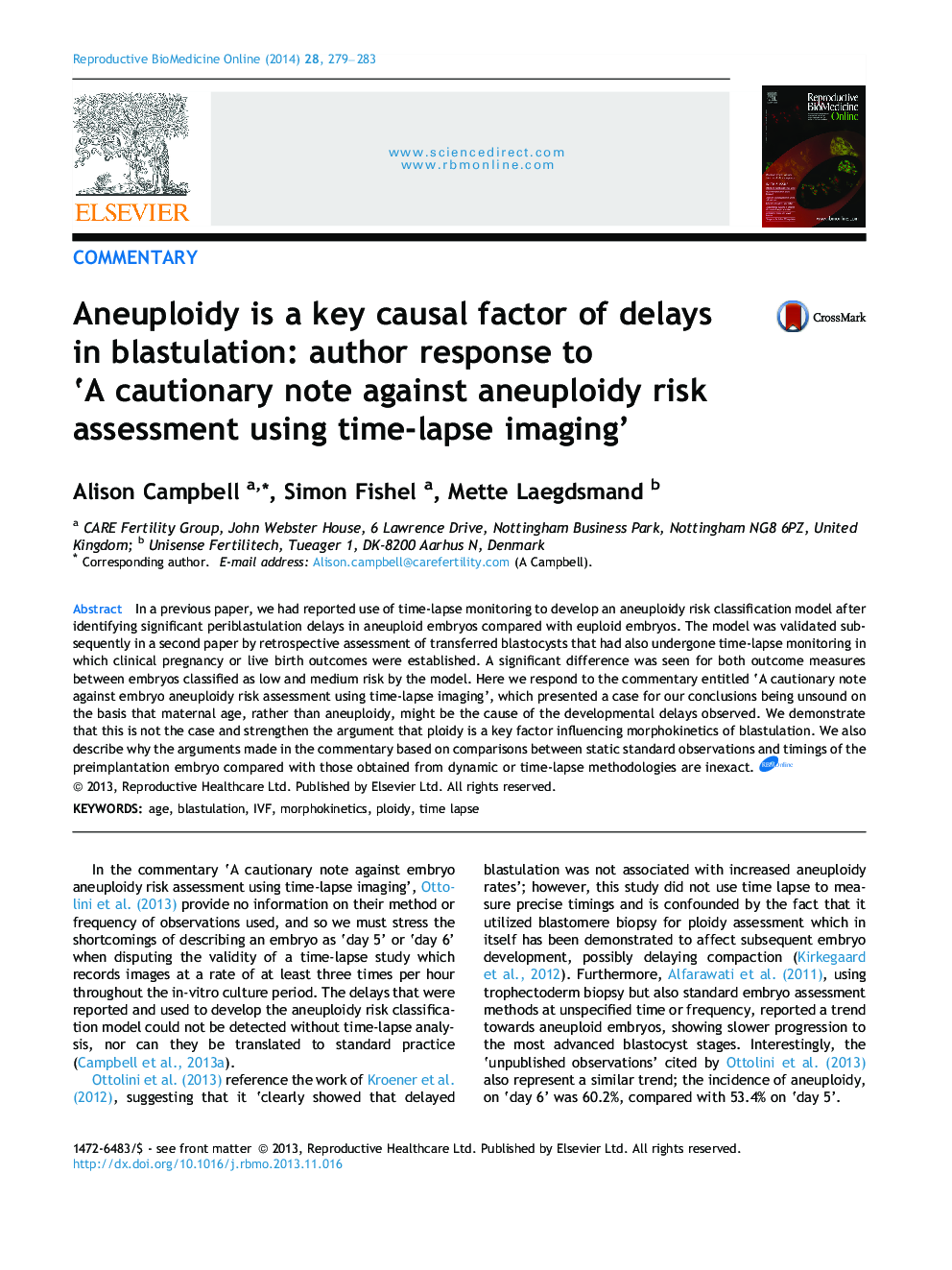| Article ID | Journal | Published Year | Pages | File Type |
|---|---|---|---|---|
| 6189064 | Reproductive BioMedicine Online | 2014 | 5 Pages |
In a previous paper, we had reported use of time-lapse monitoring to develop an aneuploidy risk classification model after identifying significant periblastulation delays in aneuploid embryos compared with euploid embryos. The model was validated subsequently in a second paper by retrospective assessment of transferred blastocysts that had also undergone time-lapse monitoring in which clinical pregnancy or live birth outcomes were established. A significant difference was seen for both outcome measures between embryos classified as low and medium risk by the model. Here we respond to the commentary entitled 'A cautionary note against embryo aneuploidy risk assessment using time-lapse imaging', which presented a case for our conclusions being unsound on the basis that maternal age, rather than aneuploidy, might be the cause of the developmental delays observed. We demonstrate that this is not the case and strengthen the argument that ploidy is a key factor influencing morphokinetics of blastulation. We also describe why the arguments made in the commentary based on comparisons between static standard observations and timings of the preimplantation embryo compared with those obtained from dynamic or time-lapse methodologies are inexact.
